A short time back we visited Stockholm, Sweden for the first time. Our good friend Rosa was there to show us around. In earlier posts we’ve talked about our impressions of the city on our first day there and our visit to the Hansen open-air museum on day two. Mary wrote another post about some of the delicious Swedish food we enjoyed during our trip. Today’s post is the last of this series.
A trip to the Vasamuseet
On Tuesday morning, our last day in Stockholm, we again got out early and took a bus back to the Djurgården, an island in central Stockholm that is home to several museums and other recreation areas. We walked down a curved path from the street and came to a large barn-like building that had masts, like from a sailing ship, protruding from its roof.
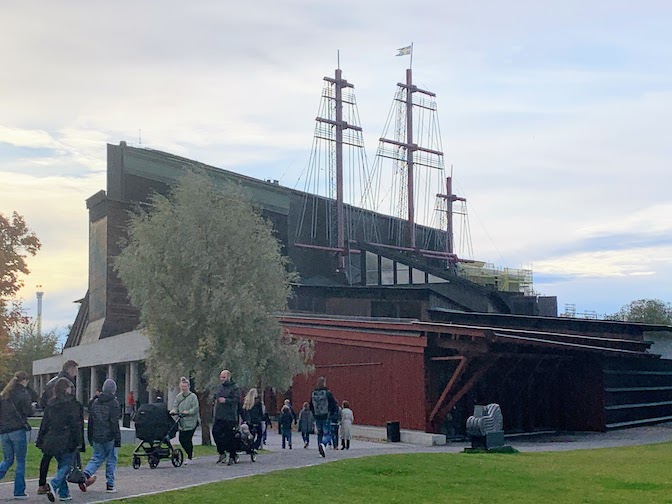
This was the Vasamuseet – the Vasa Museum. I think our mouths dropped open when we stepped inside and saw the main exhibit – the 17th century naval ship Vasa.
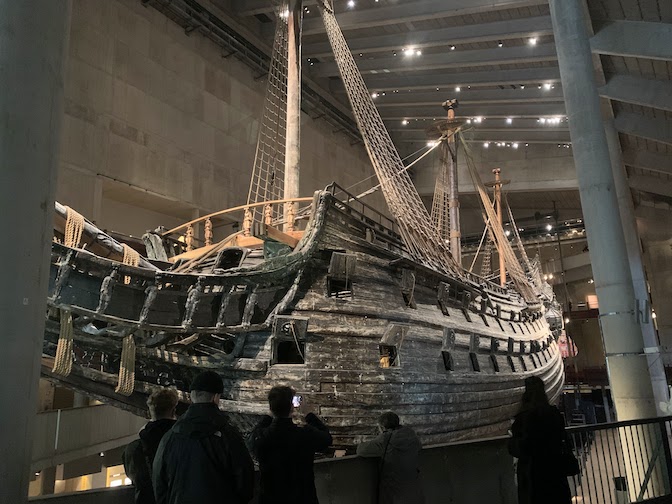
What was the Vasa?
The Vasa was supposed to be the flagship of the Swedish navy. It was one of four ships commissioned by King Gustav Adolf in 1625, and was named after Adolf’s grandfather, King Gustav I, who was known as Gustav Vasa.
On August 10, 1628, the Vasa started its maiden voyage. 10,000 people lined the shore to watch the brightly painted ship sail across the harbor. The gun ports on both its gun decks were open, giving onlookers a view of the 64 bronze cannon that had been custom-made in Stockholm for the ship.
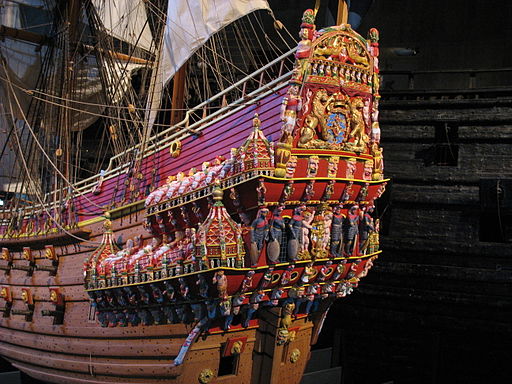
Image credit: Peter Isotalo on Wikimedia Commons
A light breeze was blowing across the water as the Vasa began her journey. But after less than a kilometer and a half, a sudden gust of wind caused the ship to tip sharply to the port side. The crew adjusted the sails and the ship slowly righted itself, but a second gust of wind pushed the ship further onto its side. The lower gun ports went under the surface and water flooded the lower decks. Shortly after, the Vasa sank to the bottom of the harbor.
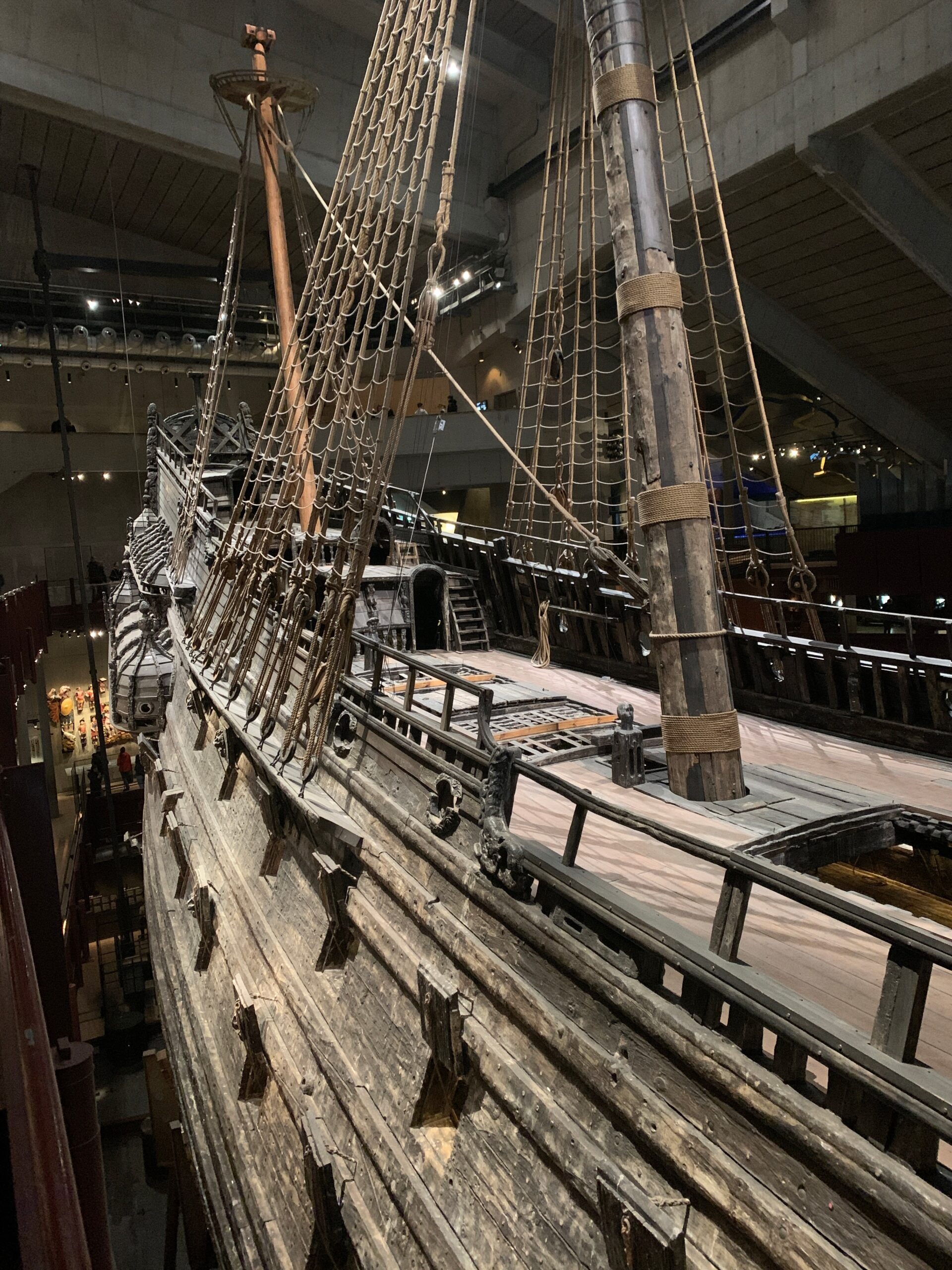
Of the 150 people people on board, 30 drowned, including several women and children – guests on board for a special Sunday outing.
An innovative recovery effort
A salvage attempt in the 1660’s succeeded in recovering 55 of the cannon. But the Vasa sat on the bottom of the harbor for over 330 years until it was finally raised in 1961.
Since then, the efforts to preserve the ship have required ingenuity and innovation. For the first 17 years, the ship was sprayed with polyethylene glycol, a chemical preservative. Then it dried for 9 years. The current museum building was opened in 1990. It has a carefully controlled environment that provides a constant temperature and humidity to help slow the deterioration of the wooden structure.
New preservation techniques have been invented over the years to help maintain the integrity of the 900 ton ship that now rests on a massive cradle in the museum. One example: The ship is held together with over 5,000 iron bolts, some as much as 3 meters long. Many of the bolts are rusting, which creates a residue that can damage the wood. The original bolts are being replaced with new ones made from carbon fiber.
Getting the full view
The ship is massive – so large that you almost can’t see the whole thing at once. The dark grey wood glistens in the dim light, probably from the chemicals that have been applied to slow down deterioration.
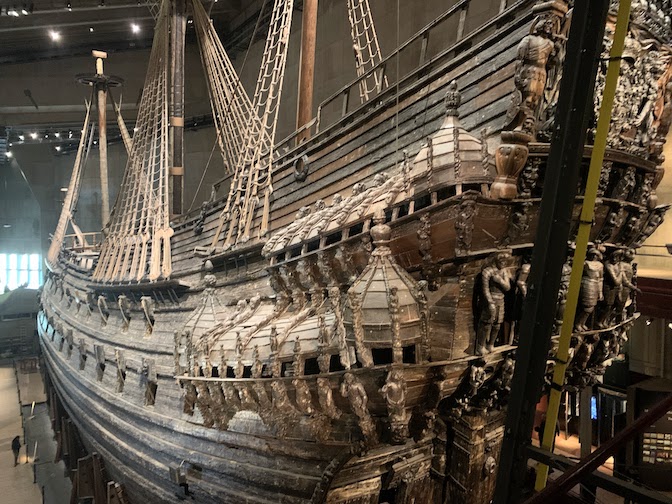
There are six different levels in the building that give you the chance to see different sections of the Vasa up close. Around the perimeter of each level are displays that show reconstructed cabins, details of the carvings, and other details of the ship’s construction.
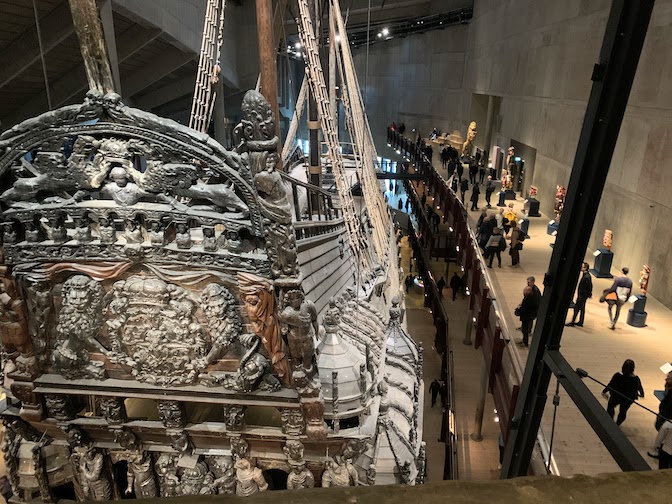
One eerily fascinating display showed how forensic scientists had reconstructed the heads and faces of some of the people who died in the shipwreck. It was amazing how much they could infer just from studying the skeletal remains.
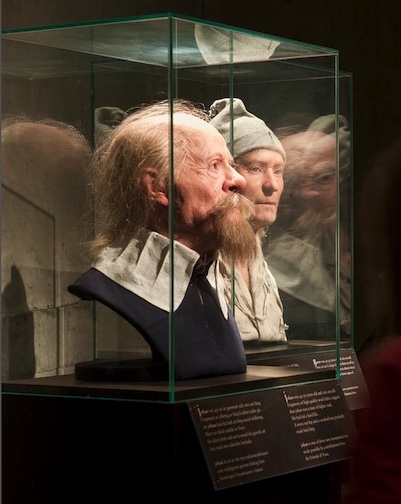
the Vasa sank. The busts were made after
a forensic scientist studied their skulls.
Image credit: Vasa Museum on Instagram
Why did the Vasa sink?
So what caused the Vasa to capsize and sink? An inquest was begun the day after the accident. The captain was arrested and held for questioning. Members of the crew and the team of shipbuilders were also questioned. The conclusion reached, after a second inquest several months later, was that the design of the ship was flawed. It’s center of gravity was too high, making it top heavy.
The original designer had died in 1627, a year before the ship was launched, so he could not testify about the ship’s design. A consistent theme of the testimony was that the measurements and design of the ship had been approved by the king himself.
No one was prosecuted or jailed as a result.
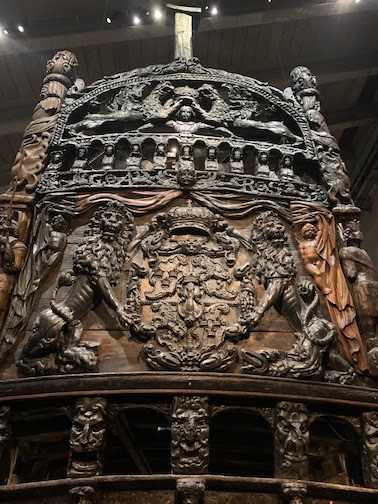
A view of some of the elaborate carvings on the stern of the ship.
In the center, two lions are holding the royal coat of arms of the Vasa dynasty.
At the top, two griffons hold the crown over the head of the young king Gustav Adolf.
All good trips come to an end
We spent several hours walking through the different levels of the museum, looking at the exhibits, and marveling at everything we saw. The size of the ship, the details of the preservation efforts, the insights to what life was like onboard – all of it was fascinating. This might be the coolest museum we’ve ever visited.
After we finished at the museum, we enjoyed one more lunch in Stockholm, then headed for the airport and a long flight home. But we’re already looking forward to our next visit to Sweden.
Until next time / Até a próxima vez
Mary and Mike
The Cook and The Writer

What’s the coolest museum you’ve ever visited? We’re adding items to our “must visit” list. Leave your recommendations in the comments below.
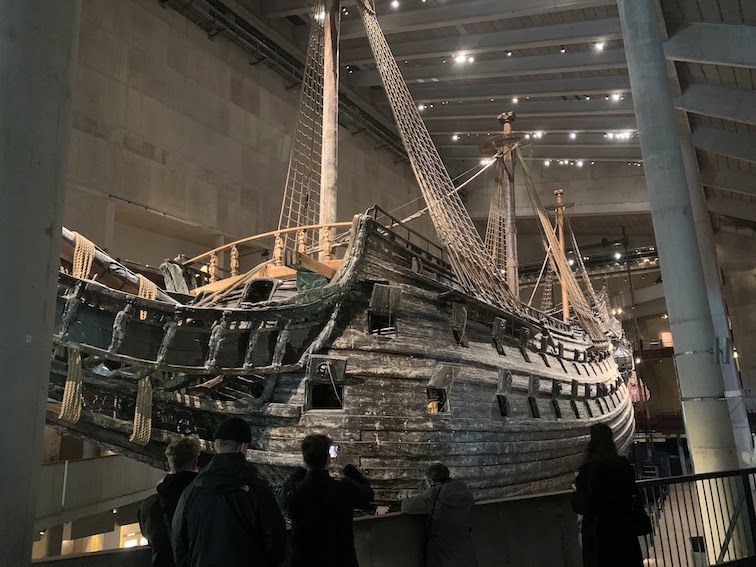

I read an article about the Vasa just a few weeks ago! I wondered if you had seen it. Very cool!!
Oh Wow, just WOW! That is so cool, thanks for sharing such detail. Did I say WOW?
Thanks,
David
Great article and photos. We, too, found the Vasa Museum an amazing experience. When in Stockholm, it’s a must.
I have very much enjoyed reading your posts of your Stockholm travels. Reminded me of our travels there, and seeing many of the same sights, taken right before Covid. It is hard to adequately describe the majesty and magnitude of the Vasa. Truly a work of art.
We have visited the vasa museum twice and found it as fascinating as you did. One of my other favorites is the Franklin institute in Philadelphia. You can walk through a replica of a human heart, visit dinosaurs and see the stars in the planetarium. Keep enjoying any museum you visit.
I have loved many museums in Europe including the Vincent Van Gogh museum in Amsterdam, the Louvre, among others. However, my faves are in the USA: The city museum in St. Louis brought me intense joy; just like an adult Disney land. I was also enthralled by the “house on the rock” in Wisconsin, which was only enhanced by being the site of the ancient gods meeting in the book “American Gods”. I also have to give a shout out to “Tinkertown” in New Mexico. Among my European quirky favorites is the Valentin-Karlstadt Museum in Munich. I don’t think you can go wrong in any way by visiting any museum. One of my jaw dropping experiences was to see my mother’s hoover canister vacuum on display at the Henry Ford Museum in Detroit